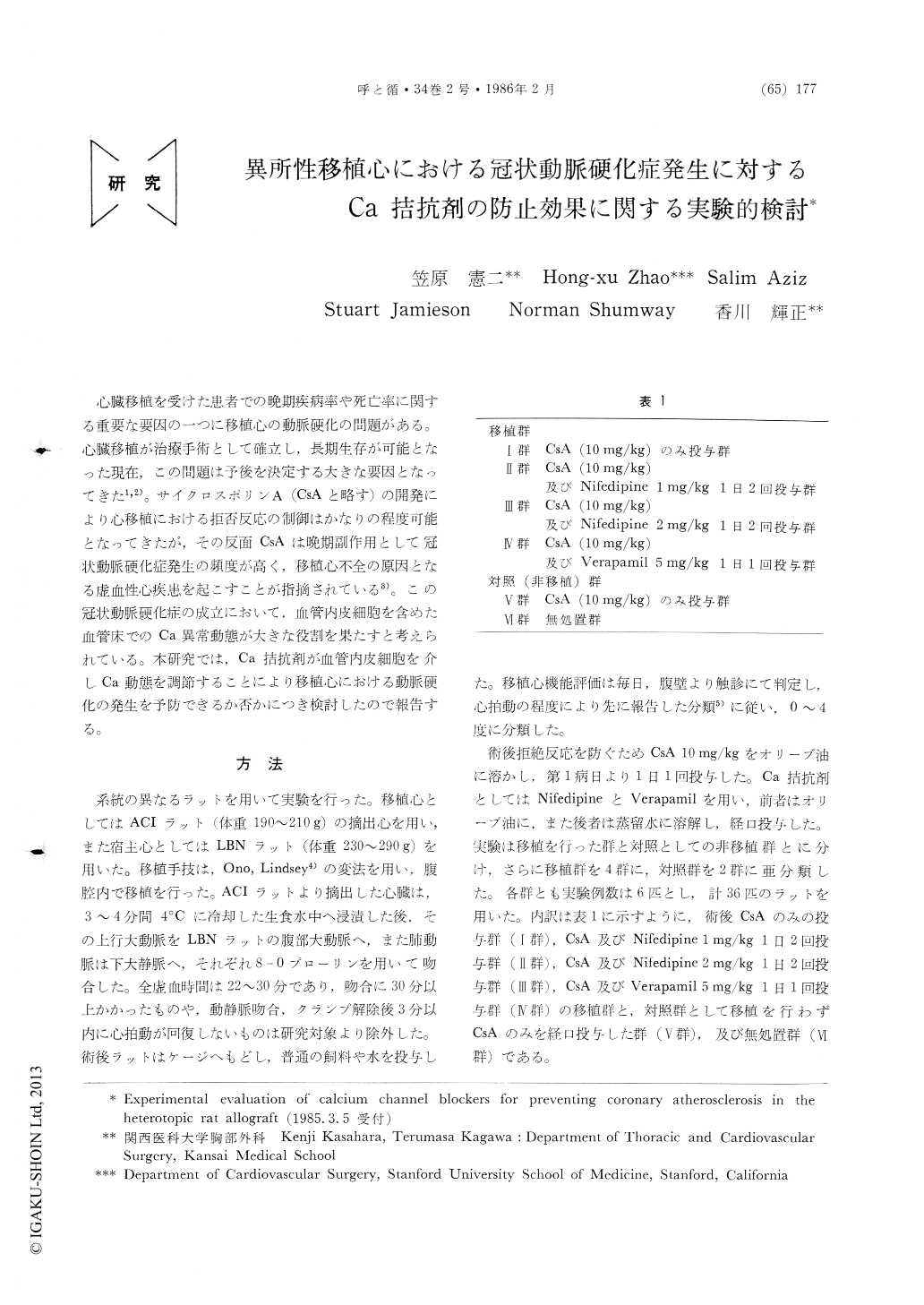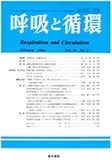Japanese
English
- 有料閲覧
- Abstract 文献概要
- 1ページ目 Look Inside
心臓移植を受けた患者での晩期疾病率や死亡率に関する重要な要因の一つに移植心の動脈硬化の問題がある。心臓移植が治療手術として確立し,長期生存が可能となった現在,この問題は予後を決定する大きな要因となってきた1,2)。サイクロスポリンA (CsAと略す)の開発により心移植における拒否反応の制御はかなりの程度可能となってきたが,その反面CsAは晩期副作用として冠状動脈硬化症発生の頻度が高く,移植心不全の原因となる虚血性心疾患を起こすことが指摘されている3)。この冠状動脈硬化症の成立において,血管内皮細胞を含めた血管床でのCa異常動態が大きな役割を果たすと考えられている。本研究では,Ca拮抗剤が血管内皮細胞を介しCa動態を調節することにより移植心における動脈硬化の発生を予防できるか否かにつき検討したので報告する。
This experiment is designed to evaluate the effect of calcium channel blockers (Nifedipine and Vera-pamil) in the process of atherosclerosis in cardiac allograft for the experimental heterotopic heart trans-plantation by using rats. In this study, a level of serum cholesterol in the groups with Nifedipine is higher than compared with the groups without Ni-fedipine. The myocardial calcium content in thetransplanted hearts is significantly higher in all groups compared with those in recipients heart. And the myocardial calcium content in a group treated with CsA (Cyclosporin A) +Nifedipine, is significantly lower in transplanted heart than those in a group treated with CsA alone.
Calcium channel blockers reduced the calcium con-tent in the host heart aortic tissue, partly in the cardiac allograft. But the microscopical evaluation of transplanted heart coronary artery shows vessel disease in all group with varying degree of athero-sclerosis, and there is no significant difference a-mong these groups.
We conclude that calcium channel blockers did not prevent cardiac allograft coronary artery athe-rosclerosis.

Copyright © 1986, Igaku-Shoin Ltd. All rights reserved.


